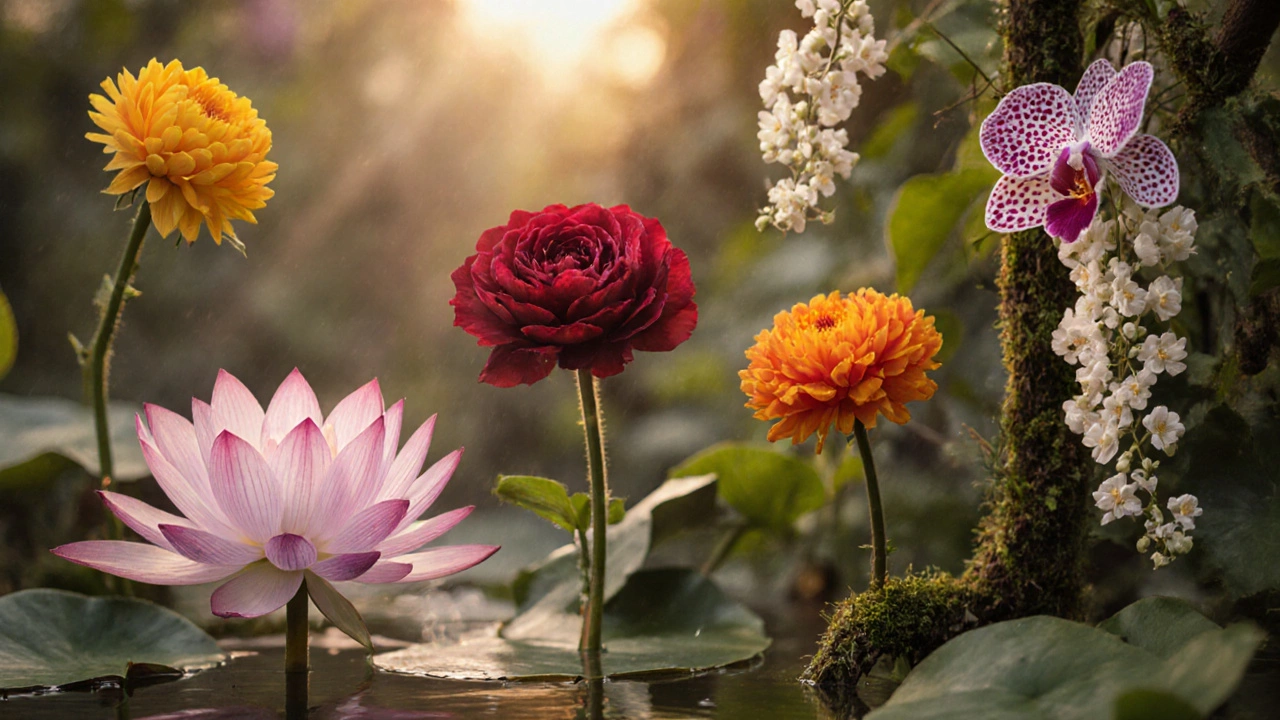Explore India's top beautiful flowers, from the iconic lotus to fragrant jasmine, with cultural insights, growing tips, and a handy comparison guide.
Lotus India: Growing Sacred Water Lilies in Indian Gardens
When you think of lotus India, a sacred aquatic plant deeply rooted in Indian culture, spirituality, and ecology. Also known as Nelumbo nucifera, it sacred lotus is more than a flower—it's a symbol of purity, resilience, and divine beauty that grows naturally in ponds, lakes, and even backyard water features across the country. Unlike ordinary water lilies, the lotus rises clean from muddy waters, untouched by dirt, making it a powerful emblem in Hindu and Buddhist traditions. But beyond its spiritual meaning, the lotus is also a practical plant for Indian gardeners who want to add color, calm, and ecological value to their outdoor spaces.
The lotus cultivation, the process of growing lotus in controlled water environments like ponds, tanks, or large containers works best in warm, shallow waters with plenty of sunlight—conditions India offers for most of the year. You don’t need a huge pond to grow it; even a 20-gallon tub with rich, heavy soil and 6–12 inches of water can support a healthy plant. The Indian water plants, native aquatic species adapted to monsoon rains, high heat, and seasonal water fluctuations like the lotus thrive where other plants struggle. They help control algae, provide shade for fish, and attract pollinators—all while looking stunning. In places like Kerala, Bengal, and Uttar Pradesh, you’ll find lotus blooming along temple tanks, village ponds, and even urban rooftop gardens.
Many gardeners in India wonder if they can grow lotus without a natural water body. The answer is yes. With the right soil mix—clay-rich, not sandy—and consistent warmth, you can grow it in containers on terraces or balconies. It’s not high-maintenance once established. Just make sure it gets at least 6 hours of direct sun, avoid moving it once rooted, and don’t over-fertilize. The lotus doesn’t need fancy care; it just needs space to spread its roots and reach for the sky. And when it blooms—usually from late spring through early autumn—the large, fragrant flowers are worth every bit of effort.
There’s also a quiet ecological benefit: lotus plants naturally filter water. Their roots absorb excess nutrients, reducing the chance of mosquito breeding and keeping ponds clearer without chemicals. That’s why many eco-conscious farmers and gardeners in India are bringing them back—not just for beauty, but for balance. Whether you’re drawn to its spiritual roots, its hardiness in Indian summers, or its role in sustainable water management, the lotus is one of the few plants that connects culture, nature, and practical gardening in a single, elegant form.
Below, you’ll find real guides from Indian gardeners who’ve grown lotus successfully—whether in backyard ponds, temple courtyards, or small concrete containers. Learn how to start from seed, handle monsoon floods, prevent pests, and even harvest edible roots and seeds. No theory. No fluff. Just what works on the ground in India’s varied climates.
